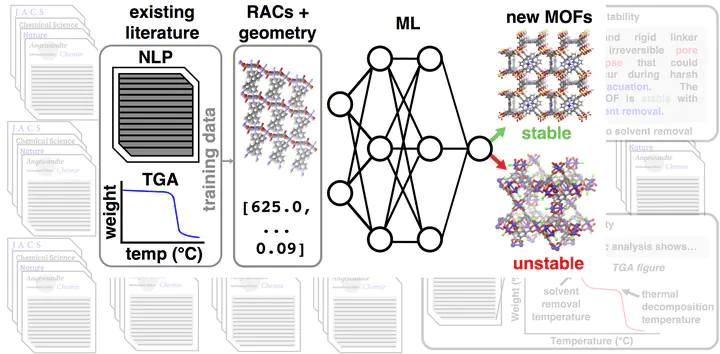Using Machine Learning and Data Mining to Leverage Community Knowledge for the Engineering of Stable Metal-Organic Frameworks

Abstract
Although the tailored metal active sites and porous architectures of MOFs hold great promise for engineering challenges ranging from gas separations to catalysis, a lack of understanding of how to improve their stability limits their use in practice. To overcome this limitation, we extract thousands of published reports of the key aspects of MOF stability necessary for their practical application: the ability to withstand high temperatures without degrading and the capacity to be activated by removal of solvent molecules. From nearly 4000 manuscripts, we use natural language processing and image analysis to obtain over 2000 solvent-removal stability measures and 3000 thermal degradation temperatures. We analyze the relationships between stability properties and the chemical and geometric structures in this set to identify limits of prior heuristics derived from smaller sets of MOFs. By training predictive machine learning (ML, i.e., Gaussian process and artificial neural network) models to encode the structure–property relationships with graph- and pore-structure-based representations, we are able to make predictions of stability orders of magnitude faster than conventional physics-based modeling or experiment. Interpretation of important features in ML models provides insights that we use to identify strategies to engineer increased stability into typically unstable 3d-transition-metal-containing MOFs that are frequently targeted for catalytic applications. We expect our approach to accelerate the time to discovery of stable, practical MOF materials for a wide range of applications.